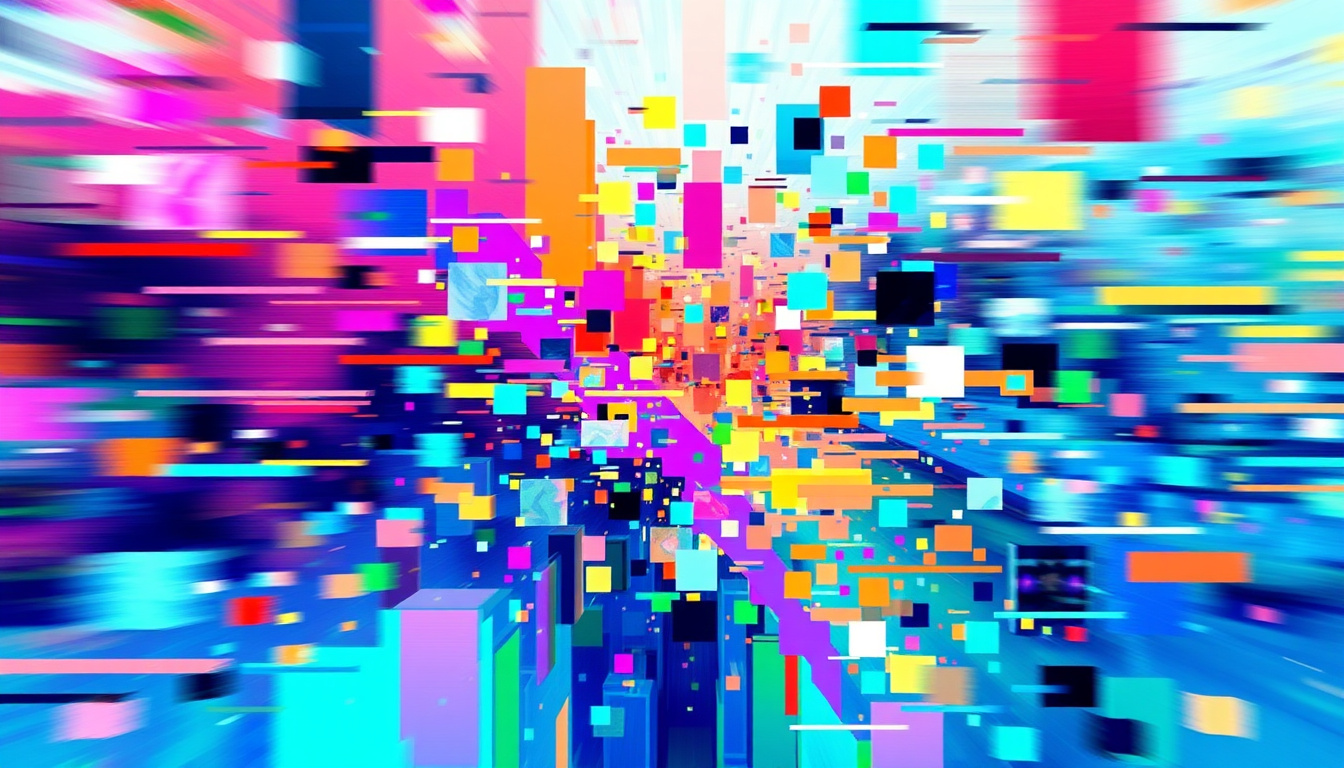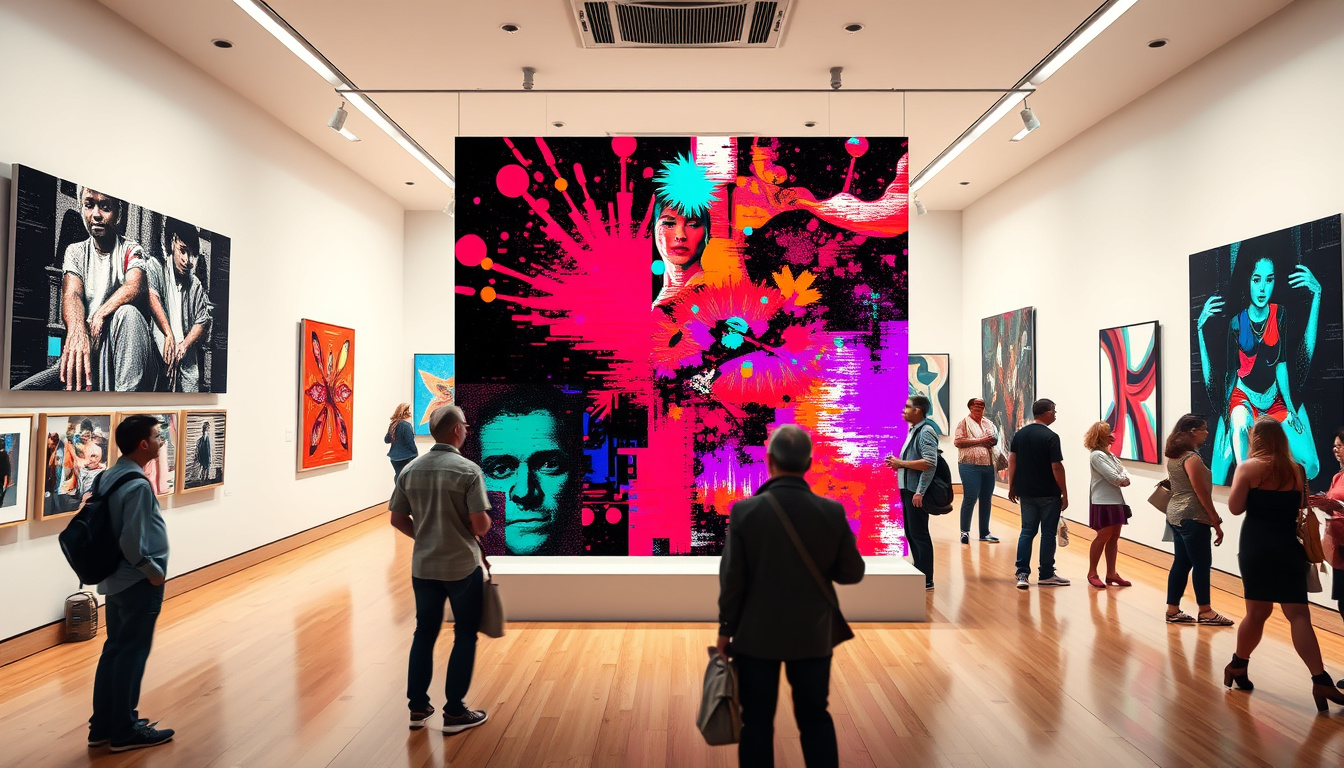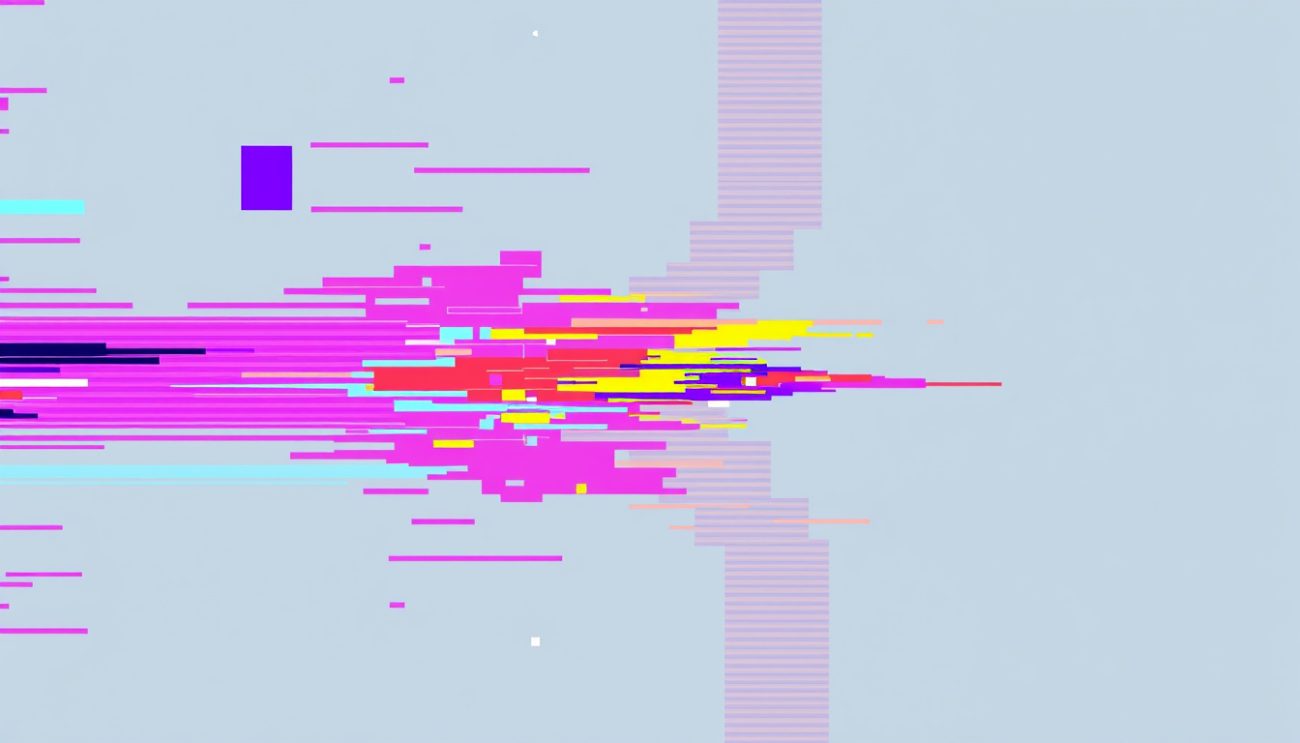In an age dominated by pristine digital visuals and flawless design, a new artistic movement has emerged that celebrates the beauty of imperfection: glitch art. This innovative form of art embraces disruptive digital errors, turning bugs and faults into stunning visual masterpieces. In this article, ‘Glitch Art 101: Turning Bugs into Beauty,’ we will explore the definition and history of glitch art, delve into the techniques used to create it, showcase essential tools and software, and discuss effective ways to share your creations with the world.

Key Takeaways
- Glitch art is a creative medium that embraces digital errors and imperfections.
- The history of glitch art highlights its evolution from early digital experiments to a recognized art form.
- Common techniques for creating glitch art include data bending, pixel sorting, and circuit bending.
- Various tools and software like Audacity and Photoshop are essential for producing glitch art.
- Sharing and showcasing glitch art can be done through social media platforms and online galleries.
What is Glitch Art?
Glitch Art 101: Turning Bugs into Beauty is an exploration of a fascinating intersection of art and technology. At its core, Glitch Art encapsulates the aesthetic and conceptual beauty that can emerge from digital errors, data corruption, and malfunctions. Artists intentionally manipulate images, software, and even hardware to create compositions that reveal the chaotic beauty hidden within technological failures. This genre embraces imperfections, introducing visual disturbances such as pixelated distortions, color shifts, and unexpected patterns that challenge traditional notions of beauty in the digital age. By recontextualizing errors, Glitch Art not only highlights the fragility of digital media but also invites contemplation on the relationship between humans and technology. Through experimental techniques, creators transform what could be perceived as downfalls of the digital experience into striking visual art, ultimately redefining conventional artistic boundaries.
The History of Glitch Art
Glitch art, often regarded as a contemporary form of artistic expression, has a fascinating history that intertwines technology and creativity. Emerging in the late 20th century, glitch art began as a form of visual art created from the errors within digital systems and software. With the rise of digital technology and the internet in the 1980s and 90s, artists started to explore the aesthetic possibilities of digital glitches—errors and bugs that could be manipulated to create visually intriguing pieces. This phenomenon paved the way for an entirely new genre known as Glitch Art 101: Turning Bugs into Beauty. The term ‘glitch,’ which originally referred to an unexpected malfunction, was reclaimed by artists who recognized the beauty in disruption. Through this lens, what was once deemed a flaw became an innovative canvas for spontaneous creativity, illustrating how technology can both fail and inspire. Today, glitch art continues to evolve, merging traditional artistic techniques with state-of-the-art digital practices, fostering a community that celebrates imperfection and the unexpected enjoyment found within technological errors.
‘The most beautiful experience we can have is the mysterious. It is the fundamental emotion which stands at the cradle of true art and true science.’ – Albert Einstein

Techniques for Creating Glitch Art
If you’ve ever been intrigued by the surreal beauty of digital distortions, then Glitch Art 101: Turning Bugs into Beauty is your gateway into this fascinating form of creative expression. Glitch art transforms digital errors, such as visual artifacts and encoding mishaps, into captivating artwork. To start your journey in glitch art creation, employ techniques such as data-bending, where you manipulate the code of image files using text editors to produce unexpected results. You can also experiment with analog glitching, which involves manipulating VHS tapes or other physical media, and capturing the resultant chaos. Software tools like Audacity can be used to import image files and export them as sound, uncovering further layers of glitch aesthetics. Understanding your software—whether it’s Photoshop, GIMP, or dedicated glitch art applications—will enhance your creative output. Don’t shy away from trial and error; often, the most captivating glitches emerge from happy accidents. With these techniques, you’ll not only explore the limitless potential of visuals, but also participate in a growing community that celebrates the beauty found in imperfection.
Tools and Software for Glitch Art
Glitch Art 101: Turning Bugs into Beauty is an exciting journey into the world of aesthetics born from disturbances and errors in digital media. To create captivating glitch art, one must equip themselves with the right tools and software that allow for creative manipulation of images, videos, and audio. Programs such as Adobe Photoshop and After Effects are staples for digital artists, enabling them to experiment with layers and effects to achieve that delightful chaos. For those seeking more specialized options, software like Audacity can transform audio files into surreal soundscapes, while applications like Glitché deliver easily accessible web tools to produce striking visual effects with just a few clicks. Additionally, coding tools such as Processing and Max/MSP provide a more hands-on approach for those willing to dive deeper into programming to create unique and personalized glitch aesthetics. Understanding these tools is crucial to mastering Glitch Art, transforming the imperfections of digital files into stunning works of beauty that challenge traditional artistic norms.

Showcasing and Sharing Your Glitch Art
In today’s rapidly evolving digital landscape, Glitch Art stands out not only as a form of visual expression but also as a fascinating commentary on the imperfection of technology. For artists and enthusiasts looking to engage with this unique medium, understanding how to effectively showcase and share your creations is essential. Glitch Art 101: Turning Bugs into Beauty involves more than just creating visually arresting pieces; it requires savvy promotion and strategic presentation. Start by utilizing platforms like Instagram and TikTok, where visual content thrives, to share your art through captivating posts and stories. Consider participating in online communities and forums dedicated to glitch art to gain recognition and connect with other artists. Additionally, hosting virtual exhibitions or collaborative projects can amplify your visibility. By embracing the spirit of experimentation and leveraging social media, you can transform your glitch art into a widely appreciated beauty, showcasing the delightful chaos that arises from technological errors.
Frequently Asked Questions
What is Glitch Art?
Glitch art is an artistic genre that uses digital or analog errors, such as corrupted files or hardware malfunctions, to create visually striking and unexpected artworks. It transforms malfunctions into aesthetic forms.
What is the history behind Glitch Art?
Glitch art emerged in the late 20th century alongside the rise of digital media. Artists began to explore the aesthetic potential of errors and imperfections in technology, leading to a movement that embraces flaws as a source of creativity.
What techniques are commonly used to create Glitch Art?
Common techniques include data bending (altering a file’s data), pixel sorting (rearranging pixel data), and deliberate software bugs. These methods allow artists to manipulate visuals creatively, resulting in unique artworks.
What tools and software can I use for making Glitch Art?
There are various tools available for creating glitch art, including software like Audacity for data bending, Photoshop for pixel sorting, and apps like Glitché and MetaGlitch for mobile devices. Each tool offers unique features for artistic expression.
How can I showcase and share my Glitch Art?
You can share your glitch art on social media platforms like Instagram and Tumblr, create a dedicated website or portfolio, or participate in online communities and exhibitions focused on glitch art to connect with other artists and enthusiasts.
